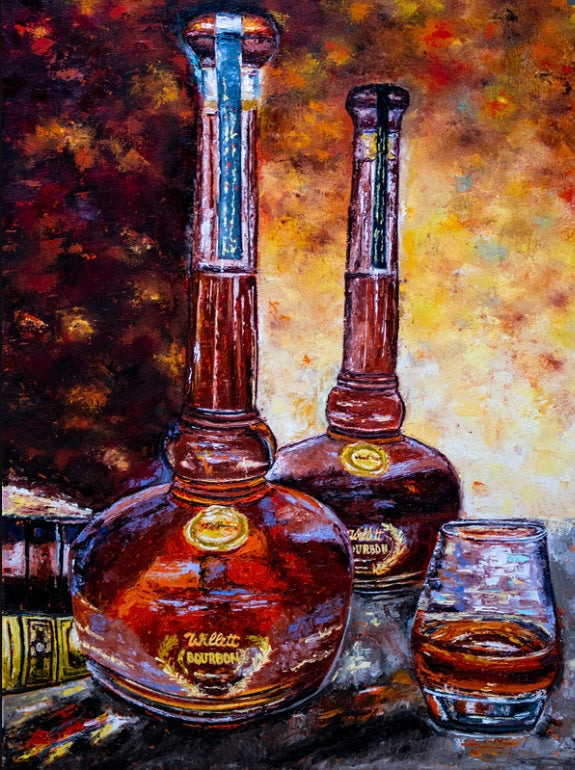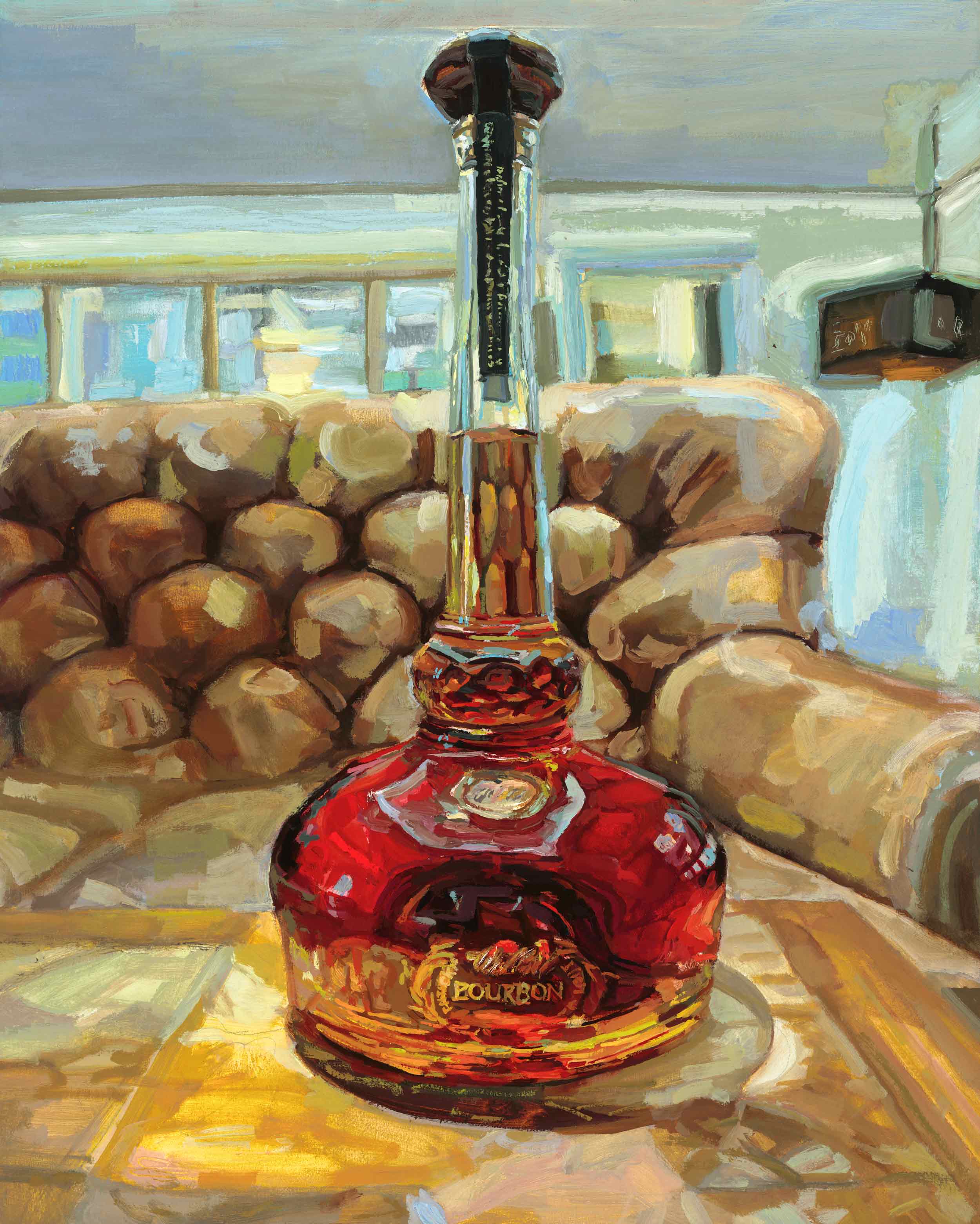Whiskey Art: Capturing the Essence of Distillation in Every Brushstroke
Whiskey Art: Capturing the Essence of Distillation in Every Brushstroke
Blog Article
The Importance of Whiskey Art in Celebrating Heritage and Craftsmanship in the Beverage Sector
The detailed partnership in between bourbon art and the event of heritage and craftsmanship within the drink market can not be overstated. Through attentively made tags and bottles, scotch brands encapsulate their historic origins and the artisanal skills that specify their manufacturing approaches. This creative measurement not only enhances market allure however also functions as a channel for cultural narration, promoting a deeper link in between the craft and the consumer. As we explore the numerous aspects of this topic, fascinating questions regarding the impact of contemporary fads on conventional methods emerge, triggering further assessment.
The Historical Roots of Whiskey
At the heart of scotch's appeal exists an abundant tapestry of historic origins that trace back to old worlds. The origins of scotch can be linked to the purification practices of the Sumerians and Babylonians around 2000 BCE, where very early types of fermented grain beverages began to emerge. It was in the Center Ages that the art of distillation evolved significantly, specifically in Ireland and Scotland, leading to the development of scotch as we know it today.
The term "bourbon" itself acquires from the Gaelic word "uisce beatha," indicating "water of life." This phrase highlights the cultural significance of bourbon in Celtic societies, where it was frequently connected with rituals, celebrations, and common bonding. By the 15th century, distillation ended up being a recognized craft within reclusive neighborhoods, paving the method for the facility of legal distilleries.
As profession routes broadened, bourbon's appeal grew, transcending regional limits and recording the passion of lovers worldwide. Realism Art. This historic journey reflects not only the craftsmanship behind scotch production yet likewise its indispensable function in social and cultural contexts, marking it as a substantial beverage throughout history
Artistic Expression in Branding
Bourbon branding stands as a compelling intersection of artistry and commerce, where aesthetic identity plays an essential function in shaping customer assumption. The aesthetic appeals of whiskey labels, packaging, and marketing products mirror not just the brand name's story but likewise its core values and heritage. Through artistic expression, distilleries share a story that reverberates with consumers, evoking feelings and sparking connections.
Using shade, typography, and imagery in branding serves to differentiate products in a saturated market. Traditional themes might evoke a sense of credibility and craftsmanship, while contemporary layouts can represent technology and forward-thinking. This tactical creative instructions enhances brand recognition and commitment, permitting customers to build a personal connection with the scotch they pick.
Moreover, creative expression in branding usually acts as a celebration of regional heritage. Distilleries regularly incorporate local signs or historical recommendations right into their layouts, developing a feeling of location that welcomes customers to partake in a broader cultural experience. Eventually, the creativity behind scotch branding not just improves aesthetic appeal but also enriches the overall narrative of the brand, fostering a deeper appreciation for the craftsmanship and heritage embedded in each bottle.
Craftsmanship in Container Style
The creativity noticeable in scotch branding expands beyond aesthetic identity to include the workmanship associated with bottle style. Each bottle functions as a vessel not just my company for the spirit within, but likewise for the tale it outlines its quality, tradition, and beginning. The design process calls for careful attention to information, as aspects such as closure, shape, and product add substantially to the overall perception of the bourbon.
Craftsmanship in container style entails choosing top notch glass that can enhance the bourbon's color and clarity, while likewise providing a responsive experience for the consumer. The silhouette of the container should be both cosmetically attractive and useful, usually reflecting the heritage of the brand name. Many distilleries go with unique shapes or printed logo designs that evoke a feeling of authenticity and history.
In addition, the label style and typography play an essential function in connecting the brand's story. Bourbon Art. A well-crafted bottle not just astounds the consumer's eye however likewise enhances the brand name's commitment to high quality and practice. This way, the workmanship of container layout comes to be an important element of the scotch experience, combining virtuosity with a profound respect for heritage
Social Value of Bourbon Art
Commemorating tradition and craftsmanship, the cultural importance of scotch art goes beyond plain aesthetic appeals, linking with the social and historic stories of the areas from which it originates. Each bottle functions as a canvas, depicting the unique stories, folklore, and practices that have actually recommended you read formed neighborhood whiskey-making methods. The detailed designs frequently reflect the heritage of the distillers, incorporating symbols and concepts that reverberate with the society and values of their communities.

Furthermore, bourbon art plays a vital function in public events and events, functioning as a concrete link between individuals and their shared experiences. By valuing the creativity in whiskey packaging, customers cultivate a deeper understanding and regard for the craft, inevitably improving their enjoyment of the beverage itself.
Modern Trends in Scotch Discussion
In recent times, the presentation of whiskey has progressed to mirror modern preferences and fads while still honoring typical workmanship - Bourbon Art. Distilleries are significantly concentrating on visual aspects that boost the general alcohol consumption experience, connecting the space between heritage and modernity
Innovative bottle designs have arised, usually incorporating lasting products and artistic labels that tell engaging tales. Many brands now work together with local artists, instilling their products with unique aesthetic expressions that resonate with consumers. In addition, check this site out limited-edition launches are frequently packaged in collectible containers, including worth and allure for connoisseurs.

Final Thought
In conclusion, scotch art offers as a vital channel for expressing the heritage and workmanship inherent in the drink industry. Through detailed branding, innovative container styles, and culturally considerable artistic components, whiskey brand names effectively honor their practices and connect with customers.


Workmanship in bottle design entails choosing high-quality glass that can boost the bourbon's shade and quality, while additionally offering a tactile experience for the consumer. In this means, the craftsmanship of container design comes to be an important aspect of the scotch experience, combining creativity with an extensive respect for heritage.
In conclusion, bourbon art offers as an important conduit for revealing the heritage and workmanship fundamental in the drink sector.
Report this page